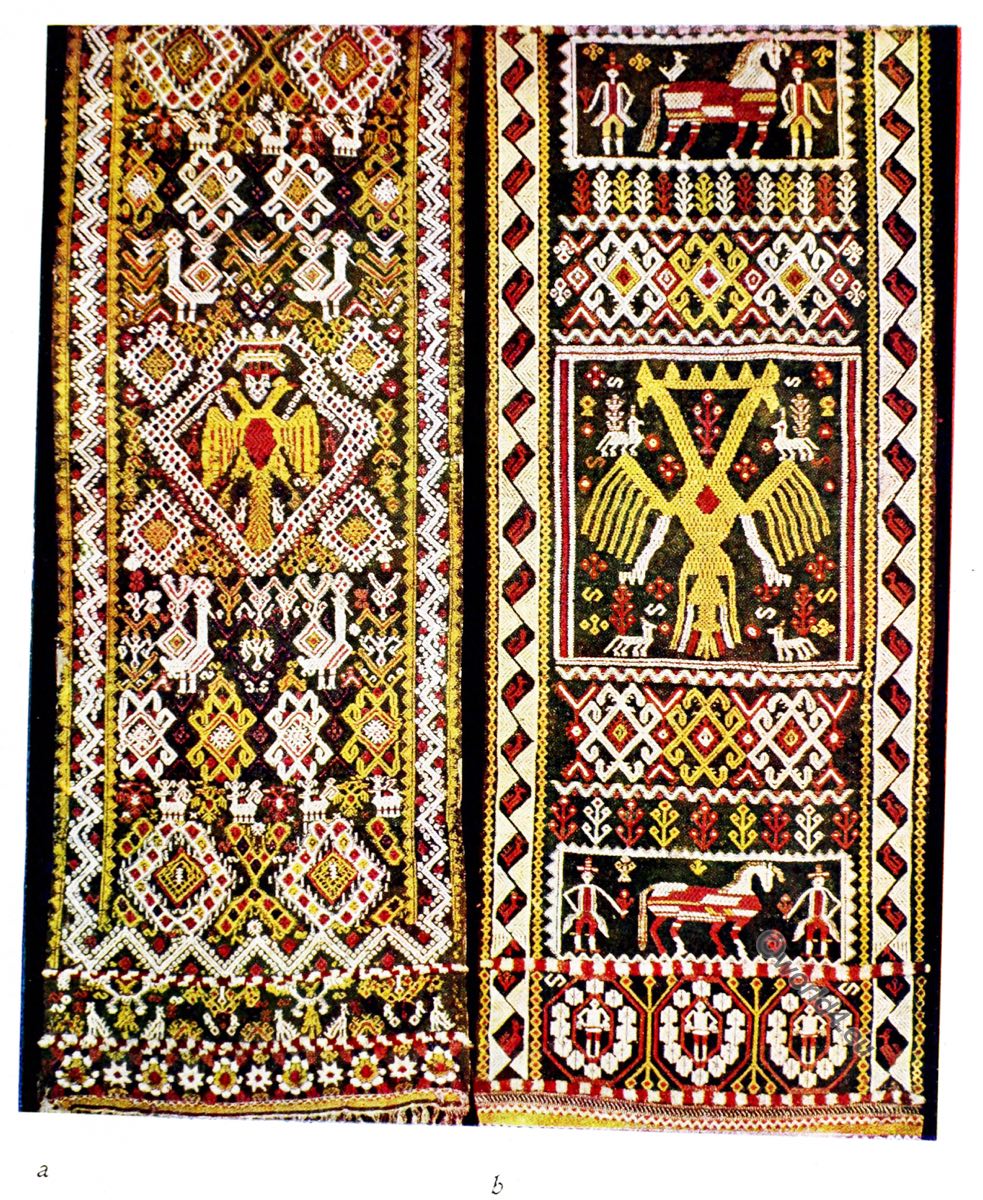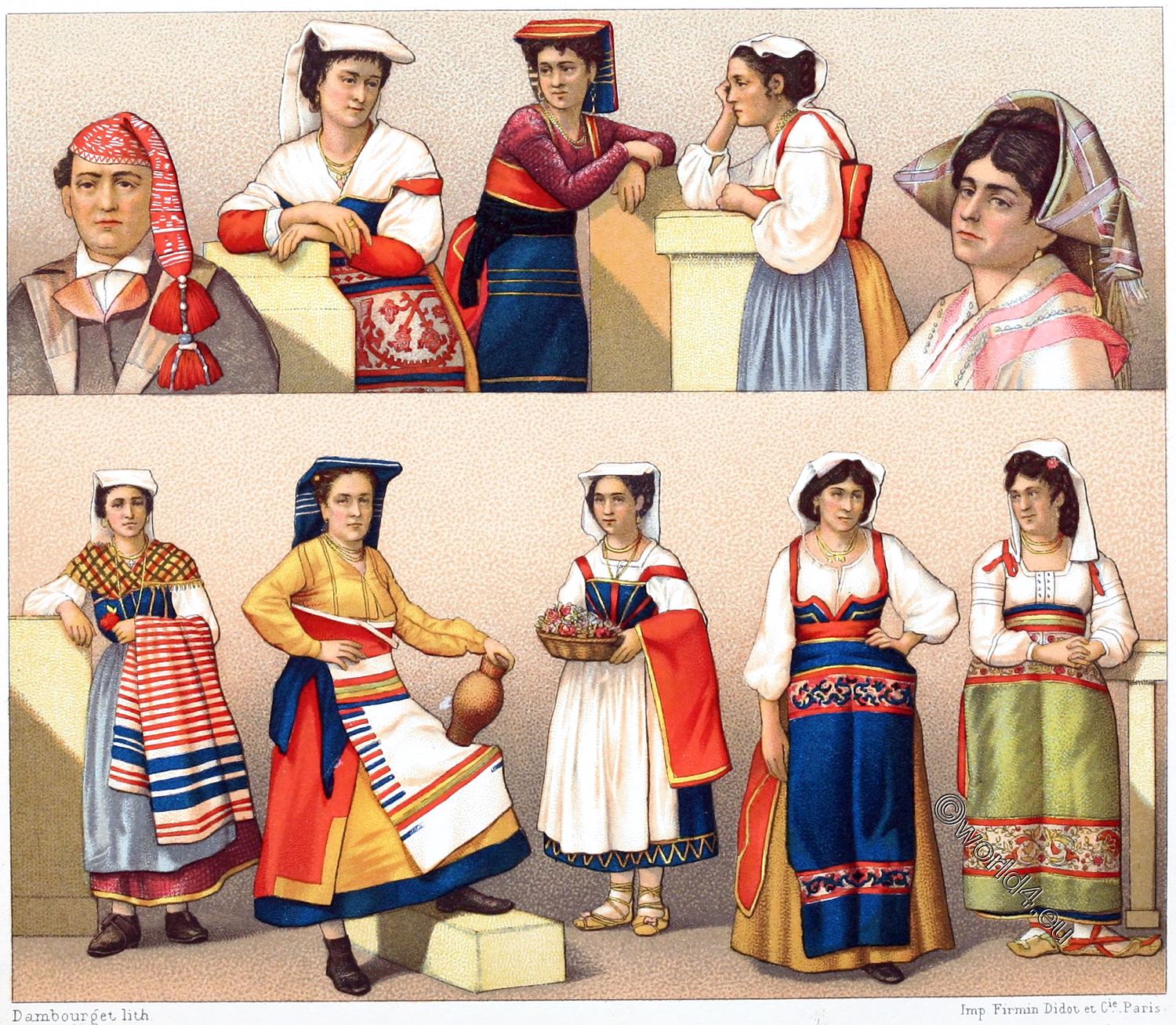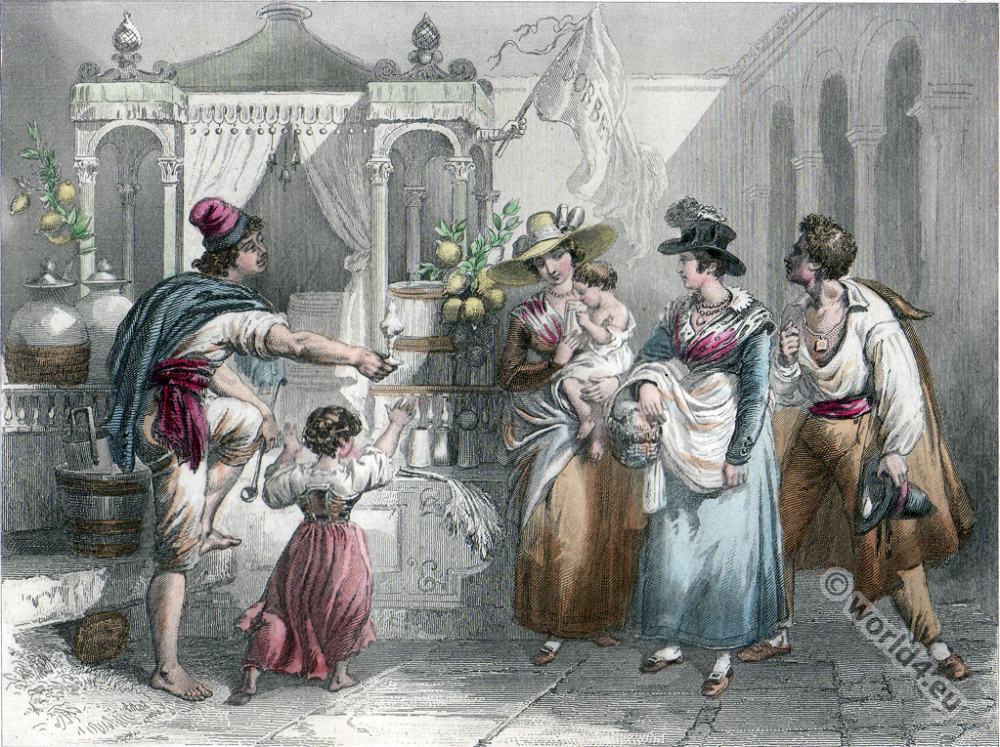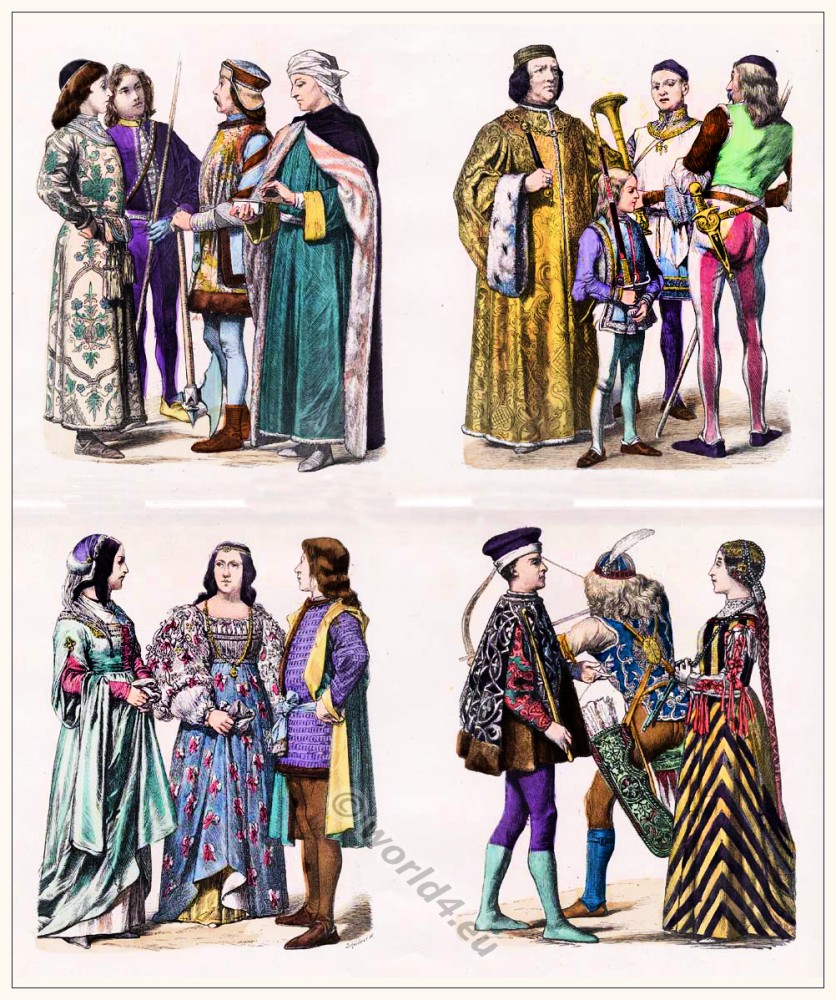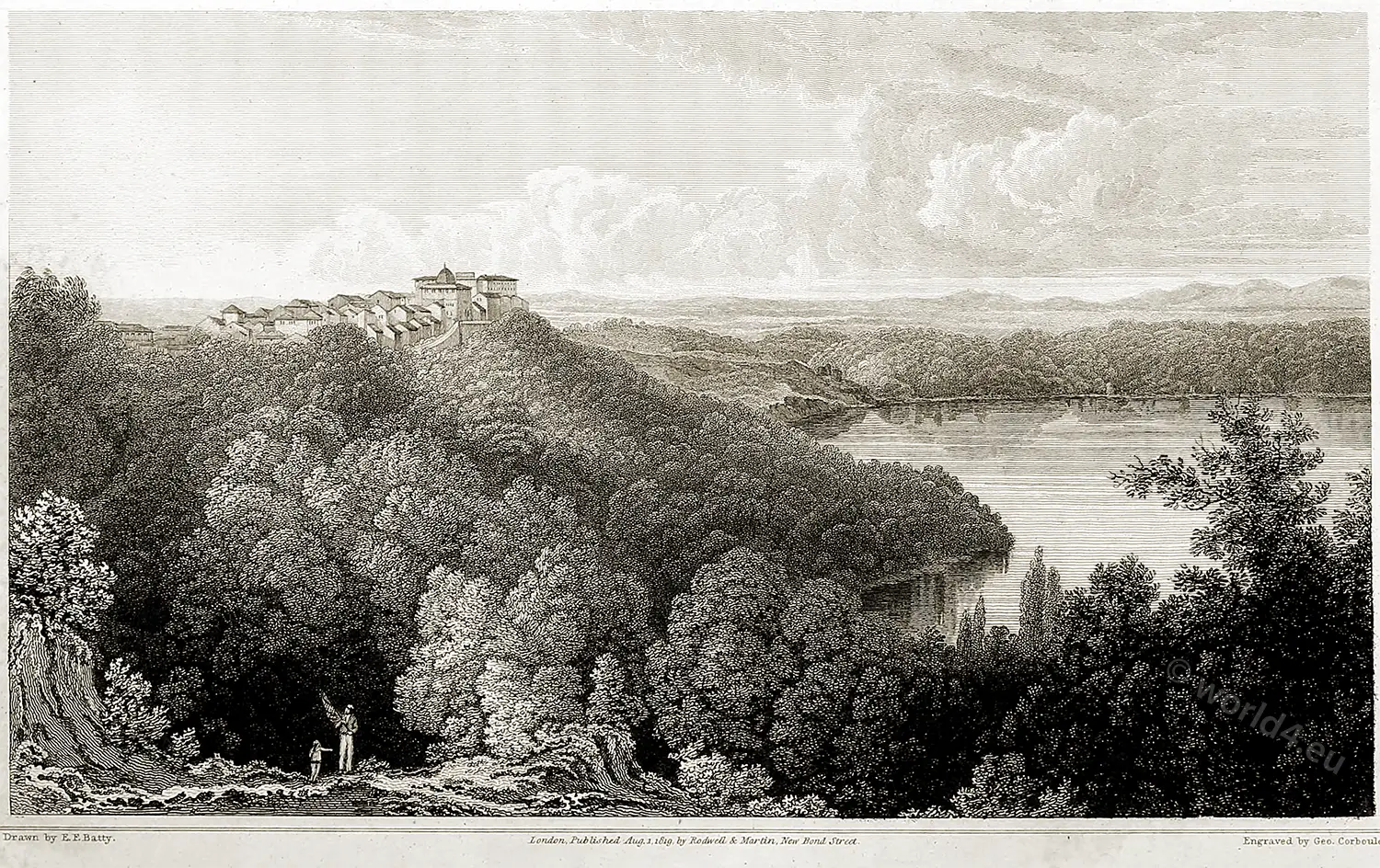Woolen carpets of Terra di Lavoro, 18th century.
TABLES Nos. XXI a and XXI b.
Two woolen carpets of the “Terra di Lavoro”, Dimensions: 2,97 m. X 0,99 m., 2,88 m, X 0,92 m. 18th century. Private collection, Rome.
Source: Italian peasant rugs by Albert Sautier.
The Land of Labour (Terra di Lavoro in Italian) is an Italian territory, a historical region located today in Lazio and Campania. The name originates from Liburia (after the name of the ancient Leborini people or Liburi), the term that designated the territory around Aversa.
In ancient times, a large part of the Land of Labour was called Campania felix (“Happy Campania”), because of the opulence and productivity of the region, and whose main city was Capua (the very term Campania derives from Capuania). Augustus included it in Regio I “Lazio and Campania”.
Under the Lombards, the region was part of the principality of Capua. Under Norman domination, Roger II of Sicily divided his territories into three provinces: Apulia, Calabria and Land of Labour (Liburia or Liboriae).
Under William the Bad, the province included the province of Caserta in the south Naples, Nola and part of the province of Benevento in the north the valley of Garigliano and the middle valley of Liri in the east Monteroduni, Venafro and part of Samnium.
The Land of Labour constituted a province of the kingdom of Sicily, then a department of the kingdom of the Two Sicilies (dipartimento di Terra di Lavoro) whose capital was Capua until 1818, then Caserta. At that time, the Land of Labour included the entire province of Caserta, the southern part of the province of Latina, part of that of Frosinone, Naples, Benevento, Avellino and Isernia.
This province was divided in 1927 by Mussolini.
Discover more from World4 Costume Culture History
Subscribe to get the latest posts sent to your email.

